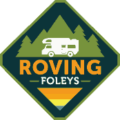Embarking on an RV trip offers the excitement of exploring the open road, discovering new places, and creating unforgettable memories with your loved ones. But planning an RV trip and executing the perfect RV road trip can be challenging, especially for first-time RVers. Don’t worry! We’ve got you covered with a comprehensive step-by-step guide that will help you plan, pack, and enjoy your RV adventure to the fullest.
From choosing the right RV to finding the best campgrounds, and from packing essentials to embracing the unexpected, this guide has everything you need to make your planning an RV trip a stress-free and enjoyable experience. So, buckle up and get ready to hit the road with confidence!
Planning An RV Trip
- Choose the right RV
- Plan your road trip
- Select campgrounds and overnight stays
- Pack and prepare to travel
- Enjoy the journey- not just the destination
- Learn travel tips and tricks
Key Takeaways
- Choose the right RV for your trip based on objectives, interests and budget.
- Research reviews and make reservations to select appropriate campgrounds & overnight stays.
- Manage gas, tolls & expenses strategically. Follow basic driving guidelines when parking.
Choosing the Right RV for Your Trip

The foundation of your perfect RV trip is choosing the right RV that caters to your needs. With various types of RVs available, such as motorhomes, travel trailers, and truck campers, it’s crucial to find one that suits your preferences, budget, and destination. Consider your trip objectives and personal interests when choosing a truck camper, as this will ensure a memorable experience during your RV trips.
Purchasing an RV can provide the advantage of long-term savings, allowing you to explore multiple destinations without the need for constant rentals. However, the decision between renting or owning an RV depends on your travel frequency, budget, and personal preferences. We’ll delve further into these considerations.
Renting vs. Owning an RV
Renting an RV can be more economical if you plan to go on RV road trips occasionally, as you won’t need to make a significant initial investment. However, you may not have access to all the features and amenities of a personally-owned RV with an RV rental.
On the other hand, owning an RV can be more cost-effective if you intend to RV regularly and enjoy various RV resorts and destinations without the need for constant rentals. Assess factors like the duration of the trip, the destination, and your personal preferences to decide the best option for your upcoming RV trip.
Renting an RV can be an excellent way to test the waters and experience the RV lifestyle before committing to a purchase, while being an RV owner provides the freedom to explore and customize your home-on-wheels.
Try one fo the peer rental agencies like Outdoorsy or RV Share to rent directly from owners.
Determining Your RV Needs
Selecting the right RV for your trip depends on various factors, such as your family size, towing capabilities, and familiarity with driving and towing. When planning your route and destination, consider the availability of RV campsites, the type of activities you want to do, and the overall budget for your trip.
Sticking to familiar routes and avoiding deviation, especially if you’re not experienced in driving a motorhome or towing a trailer, is of paramount importance. Different types of RVs, such as:
- Class A motorhomes- the largest motorhomes, can range up to over 40 feet long.
- Class B motorhomes- these are van conversions, or RV’s that look like large vans.
- Class C motorhomes- these are traditionally pickup truck or van fronts with a large cube living space built on back.
- Travel trailers- these are towable RV’s that hook onto a ball hitch on the bumper of the tow vehicle.
- Fifth Wheels- these are also towable rigs, but they have a raised portion in the front and they come up over the bed of a truck, hitching right onto the frame above the rear axle.
- Truck campers- thruck campers fit onto the bed of a pickup truck, providing a small living space.
Within these styles, there will be something that caters to your specific needs and preferences. Your choice should align with your trip requirements, comfort level, and travel style.
Planning An RV Trip

Mapping out your RV route is a vital step towards a smooth and enjoyable trip. A well-planned route allows you to avoid potential roadblocks, such as tunnels, winding roads, or low bridges, depending on the size of your RV. Additionally, planning your route helps optimize your travel time, allowing you to fully enjoy your journey and the various activities and experiences along the way.
Effectively planning your RV route involves using a variety of trip planning tools, exploring diverse destinations, and striking a balance between travel time and exploration. We’ll review some prime RV trip planning tools and provide tips on how to balance travel time and exploration.
Top RV Trip Planning Tools
There are numerous RV trip planning tools and resources available to help you create the perfect route and itinerary for your journey. These tools can help you find RV-compatible campgrounds, plan the safest route, and identify suitable campgrounds, rest stops, and gas stations for your vehicle size, even free camping sites.
Some of these useful tools for planning RV trips include:
- RV Trip Wizard: helps you discover campgrounds, plan road trips, and calculate costs
- RV Life’s Campground Reviews: provides comprehensive reviews of campgrounds and RV parks
- Roadtrippers: assists in uncovering remarkable and unforeseen destinations along your route
- KOA Trip Planrip Planner: enables users to store their preferred KOA campgrounds and refine their search to specific locations
- Good Sams Trip Planner: get trip planning, maps, and campground reviews
These tools can greatly enhance your RV trip planning experience.
Employ these tools to design a seamless itinerary for your RV trip.
Balancing Travel Time and Exploration
A well-balanced RV trip entails a perfect fusion of travel time and exploration. Keeping this balance is key to ensuring a delightful and memorable trip. To achieve this, follow the 333 Rule of RVing, which suggests not driving more than 300 miles a day or arriving at your destination later than 3:00 pm. This allows you to maximize your time at each location and have a more relaxed travel experience.
Additionally, try to spend 3-4 days in one area before continuing your journey. This gives you ample time to explore local attractions, enjoy outdoor activities, and immerse yourself in the local culture.
Remember, the key is to find a balance that works for you and enables you to savor both the travel and exploration components of your RV trip.
Selecting Campgrounds and Overnight Stays

Choosing suitable campgrounds and places for overnight stays is a key component of a successful RV trip. With various lodging options such as RV parks, campgrounds, and boondocking locations, it’s essential to choose the most suitable accommodations based on your preferences, budget, and destination.
Researching campground reviews, making reservations, and budgeting for campground fees and other expenses are crucial aspects of selecting the perfect campground for your RV trip. We’ll delve into these aspects with greater detail.
Researching Campground Reviews
Researching campground reviews from fellow RVers is vital in finding the ideal spot for your RV trip. Platforms like RV Life’s Campground Reviews provide comprehensive insights into the features of thousands of RV campgrounds and parks across the United States. These reviews are submitted by actual RVers from the RV LIFE community, ensuring that the information is reliable and up-to-date.
You can also seek assistance in locating campground reviews by joining RV LIFE or Fulltime Families Facebook Group or performing a search within the group for your destinations. Honest campground reviews can help you find the best accommodations that suit your needs, ensuring a comfortable and pleasant stay during your RV trip.
Making Reservations and Budgeting
Making reservations at national park campgrounds and RV parks is highly recommended, especially considering the growing number of RVers and the overall increase in RV travel. Reserving ahead for national and state parks during an RV trip can optimize cost savings and ensure that entry is secured.
When budgeting for an RV trip, consider the following factors:
- Campground fees
- Fuel costs
- Tolls
- Food
- Miscellaneous expenses that may arise during the trip
Strategizing ahead of time with regards to route planning and taking advantage of available discounts and loyalty programs can help reduce fuel and other expenses, ensuring a comfortable and enjoyable RV trip within your budget.
Packing and Preparing Your RV

Preparing and packing your RV is a crucial step towards a successful trip. From clothing and personal items to essential tools and equipment, it’s crucial to pack everything needed for a comfortable and enjoyable journey. Additionally, make sure to stow items securely to avoid any accidents or damages during the trip.
In order to ensure your comfort and maximize your enjoyment during your RV trip, it’s important to pack the necessary items for your RV kitchen. Some essential items to consider include:
- Skillet
- Large pot
- Pizza pan
- Baking dish
- Coffee maker
- Toaster
- Blender
Having these items on hand will allow you to prepare a variety of meals and beverages while on the road.
Let’s delve into the specifics of what to pack – from clothing and personal items to essential tools and equipment.
Clothing and Personal Items
For a comfortable experience, it’s imperative to pack appropriate clothing and personal items for your RV trip. Consider the weather conditions and the activities that will be undertaken during your trip. Bring along suitable clothing for various outdoor activities, as well as comfortable loungewear for relaxing inside the RV.
In addition to clothing, pack essential personal items such as:
- a surge protector
- electrical adapters
- toilet chemicals
- water bottles
- cutting tools
- bungee cords
- duct tape and electrical tape
- extra fuses
- a fire extinguisher
- a flashlight
- toiletries such as shampoo, conditioner, soap, shaving cream, razors, ponytail holders, and lotion.
Don’t forget to include any medications, travel documents, and other essential items that you may need during your trip.

Tools, Equipment, and Safety Gear
Carrying the correct tools, equipment, and safety gear can significantly enhance your RV trip. Essential tools for an RV trip include:
- Tire gauge
- Portable air compressor or tire inflator
- Portable fuel tank
- Tie-down straps and bungee cords
- Hammer
- Wrenches (standard and metric)
- Pliers (needle-nose and regular)
- Vise grips
- Diagonal cutters
- Utility knife
Safety gear is equally important, as it ensures that you are prepared for any unexpected events or emergencies. Items such as:
- a fire extinguisher
- a first aid kit
- an emergency roadside kit should be readily available in your RV. Additionally, consider bringing an RV safe if you are transporting important documents or a significant amount of cash.
Enjoying Your RV Trip: Activities and Experiences

With the planning, packing, and preparing done, it’s time to embark on your unforgettable RV journey. Get ready to explore national and state parks, embrace serendipity and unplanned adventures, and create unforgettable memories with your loved ones on your next RV trip.
RV parks and campgrounds, including the occasional RV park, often provide shuttle services to nearby attractions and host various events and activities to keep you entertained during your stay at an RV resort. Additionally, you can indulge in indoor activities such as board games, movies, and cooking inside your RV, or simply relax and enjoy the ever-changing scenery.
Exploring National and State Parks
Exploring national and state parks stands out as one of the highlights of an RV trip. These parks offer an abundance of outdoor activities such as hiking, wildlife viewing, and photography, allowing you to immerse yourself in the beauty of nature. The best time to visit these parks is during the shoulder seasons, as they tend to be less crowded and offer a more enjoyable experience.
When exploring national and state parks, such as the Utah Mighty 5, Yellowstone, or the Great Smoky Mountains, make sure to:
- Plan your route and activities ahead of time
- Take advantage of any available guided tours or educational programs
- Follow park rules and regulations
- Leave no trace, so future generations can enjoy these natural wonders as well
This will help you make the most of your visit and ensure a memorable experience.
Embracing Serendipity and Unplanned Adventures
RV trips are as much about the journey itself as they are about arriving at your ultimate destination. Embrace serendipity and unplanned adventures on your RV road trip by:
- Being open to new experiences
- Taking detours to explore hidden gems
- Savoring the journey
- Trying a new activity
- Visiting a roadside attraction
- Taking a scenic route to your next stop
By incorporating serendipity and unplanned adventures during your RV trip, you create unique and lasting memories that you may not have encountered otherwise. This flexibility allows you to adapt to changing conditions or unforeseen events and make the most of your trip. So, keep an open mind and be prepared for the unexpected delights that await you on your RV adventure.
RV Travel Tips and Tricks

We’ve compiled some handy tips and tricks to ensure your RV trip runs smoothly and is enjoyable. These tips cover:
- Driving and parking
- Managing gas, tolls, and other expenses
- Staying within budget
- Making the most of your RV experience
So, whether you’re a first-time RVer or a seasoned road warrior, these tips and tricks will help you navigate the open road with ease and confidence. We’ll delve into the specifics of driving and parking your RV, as well as managing your expenses.
Driving and Parking Your RV
Newcomers might find driving and parking an RV a daunting task. To ensure your safety and the safety of others on the road, follow some basic guidelines:
- Avoid drowsy driving by not driving too late
- Wear your seatbelt
- Refrain from distractions
- Conduct a safety check before resuming travel
Additionally, avoid using Google Maps for larger rigs and opt for an RV GPS instead, as it’s designed specifically for recreational vehicles.
When parking your RV, consider the following factors:
- The size of the parking spot
- The type of surface
- The availability of hookups
- The security of the area
Practicing your parking skills before hitting the road can help boost your confidence and make parking at campgrounds and other locations a breeze.

Managing Gas, Tolls, and Expenses
Careful planning and management of gas, tolls, and other expenses are needed to stay within budget during your RV trip. Formulate a budget that factors in the cost of fuel, tolls, campground fees, and any other miscellaneous expenses. Utilize fuel-efficient driving techniques and plan your route strategically to reduce fuel costs.
When driving a recreational vehicle, you’ll need to:
- Stop at the pay station to pay tolls, which will depend on the number of axles in your vehicle. Many states have gotten rid of toll booths and do everything by transponder. Look for multi-state pass programs like E-Z Pass for transponders that work in larger areas.
- Strategize ahead of time and take advantage of available discounts and loyalty programs to reduce fuel and other expenses. Gas buddy is a great app that shows the gas prices at stations near you
- Ensure a comfortable and enjoyable RV trip within your budget.
RELATED ARTICLES:
Summary
Embarking on an RV trip can be an exciting and fulfilling experience, offering the freedom to explore new places, create unforgettable memories, and bond with your loved ones. By following this step-by-step guide, you can plan, pack, and enjoy the perfect RV adventure with confidence.
So, get ready to hit the open road, embrace serendipity, and discover the joys of RV travel. The journey awaits, and a world of unforgettable experiences is just around the bend. Happy RVing!
Frequently Asked Questions
What is the 3 3 3 rule for RVing?
The 3 3 3 rule for RVing ensures a stress-free and enjoyable journey, suggesting you limit your travel to 300 miles per day and arrive at your destination by 3 p.m., staying for a minimum of 3 days.
What is the best way to plan an RV trip?
Plan your RV trip by selecting an appropriate RV, creating a budget-friendly plan, booking campsites, researching your route and parking, and adjusting your estimated time of arrival. Enjoy your journey!
What is the 2 2 2 rule for RV travel?

The 2-2-2 rule for RV travel suggests limiting daily travel to 200 miles, check in to the campground at 2 pm, and stay for a minimum of two days.
What factors should I consider when choosing the right RV for my trip?
When choosing the right RV for your trip, think about what you want to do, your interests, budget, and where you’re going.
What are some top RV trip planning tools?
Planning an RV trip is made easy with tools like RV Trip Wizard, RV Life’s Campground Reviews, Roadtrippers, and KOA Trip Planner.

Frank Foley
Frank is the Head Hubby, Daddy, and Fix-It Guy of the Roving Foleys clan. He ia an avid traveler and has spent over 5 years traveling full time with his family. he loves helping others learn about the RV life. He has also traveled in Europe, Asia, and Australia with his wife Grainne.

